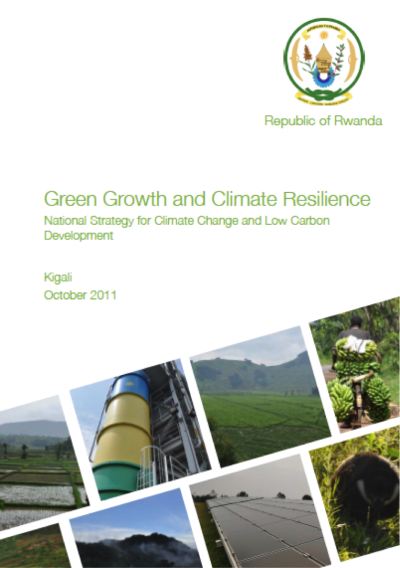Landlocked between Tanzania, Burundi, Uganda and the Democratic Republic of Congo, Rwanda has the highest population density in Africa. Rwanda currently has a population of over 11 million that is growing at an estimated rate of 2.82 per cent per year (CIA, 2010). The country’s climate is tropical, and its terrain is characterized by rolling hills and grasslands, with volcanic areas in the northwest (USDS, 2010). Roughly 91 per cent of Rwandans rely on subsistence agriculture for their livelihoods, which has contributed to significant soil erosion in the country (EC, 2009; MLEFWM, 2005; USDS, 2010). The country’s dependence on biomass for the majority of its energy has further contributed to ecological degradation (EC, 2009). The country has a small industrial base and few natural resources, and its high price of electricity has stifled diversification of the economy (USDS, 2010). The settlement of environmental problems in Rwanda arising from climate change and the variability of climate necessitates more than elsewhere the integration of social and economic dimensions in the process of analysis and evaluation for the most appropriate adaptation. The adaptation activities include, the project to increase food and medicine modes of distribution to respond to extreme climate change and sensitize to stocking and conservation of agriculture products and the preparation and implementation of woody combustible substitution national strategy to combat the deforestation and erosion as well. In Rwanda, the equatorial climate is deeply modified by the relief at a varied altitude (900 m in south-west, 1500 to 2000 m in the south and the center of the country, 1800 to 3000 m in the highlands of the north and the west and 3000 to 4507 m in the regions of Congo-Nile Crest and the chain of volcanoes. A very mountainous country of 26.338 km2, a population of 8.128.533 inhabitants of whom almost 17 % live in urban areas. The population growth rate is at 3.1%. There is a high average density of 328 inhabitants per km2. In volcanic areas of Ruhengeri and Gisenyi, it can reach 600 inhabitants/km2. The strategy for adequate response to this situation reached by NAPA Rwanda is articulated on six (6)-priority adaptation options to climate change which include:
- An Integrated Water Resource Management – IWRM;
- Setting up an information systems to early warning of hydro-agro meteorological system and rapid intervention mechanisms;
- Promotion of non agricultural income generating activities;
- Promotion of intensive agro-pastoral activities;
- Introduction of species resisting to environmental conditions;
- Development of firewood alternative sources of energy
Active Projects
Latest Publications
See allLike many LDCs, Rwanda is heavily reliant on rain-fed agriculture, which is the largest employer and also contributes 35% to its GDP. Coupled with…




